#խցիկ #ֆոտո
 @{ Casual photophile (unofficial) ; casualphotophile@spyurk.am} 4/30/2020, 5:02:46 AM
@{ Casual photophile (unofficial) ; casualphotophile@spyurk.am} 4/30/2020, 5:02:46 AM
Contax 167MT Camera Review
The highlight of my year, every year and without fail, is my trip to the United Kingdom. My primary vocational pursuit is academic research, and each year my field’s premier conference convenes at New College, Oxford in a later week of March. Philosophers of education—a small but hearty subfield of philosophy—converge on the University from all over the world. Together, we present our papers, share full-course dinners in New College’s great hall, and enjoy pints in the basement pub at night.
Just ahead of one year’s conference, as I was building on a newfound love for analog photography, I purchased the famed Carl Zeiss 50/1.7 Planar for the Contax/Yashica Mount. James wrote about the 1.4 version previously, but it’s said that the 1.7 is sharper and cheaper to boot. At the time, I was working as a public high school English teacher. My salary was modest relative to the cost of living in Boston and my wife was in school full time studying to become a veterinarian. Money was stretched. Up to then, I’d never purchased a single lens costing more than $75 U.S. Having heard the Zeiss mythology, I figured that a 50mm C/Y-mount lens was a surefire way to drink the Zeiss elixir for a good benefit-cost ratio. I think I ended up buying the Planar for around $150.
I could only buy the lens at the time and, frankly, didn’t even know where to start when it came to C/Y bodies. I planned to adapt the lens to my Fuji mirrorless, which I was still using regularly to save on film costs, get images back immediately, and continue learning how to better control my settings (live view is a tremendous help).
My early shots with the lens were massively satisfying. The images I produced were sharp, saturated, and featured the renowned 3D pop that people speak of when they speak about Zeiss glass. All was well in mid-January, but next steps still had to be taken. The lens needed a camera.
A Ghost Story of Cameras
The next step was to find a way to use my new Planar with film. So, I ended up buying a gnarly looking Yashica FX-3. This is not a Yashica FX series review, but for reference, the FX series Yashicas use the C/Y mount and are tiny, manual SLRs. Apart from a meter, the FX-3 has virtually no special features. Mine was ratty in looks and I never got batteries for the meter, but it did what I wanted it to, which was allow me to use my Planar on film. Best of all, I purchased it bundled with a Yashica 50mm f/2 lens for just $25 total.
The Yashica netted me some nice photos, thanks to the lens, but ultimately it did not fit the bill for an altogether great camera. With Oxford on the horizon—a prime chance to memorialize my time meandering down cobblestone streets between English Gothic buildings with my close friends—I felt the urge to buy a genuine Contax camera.
I began my trek into the annals of Contax camera history to find which one would fit the bill. I was looking for a camera that was affordable but powerful. The previous fall, I had purchased a Nikon F2, but it turned out to be far from my ideal. I was learning (and I’m now trying to embrace the fact) that I prefer having some modern features in my analog photography. The F2 is a beautiful beast. I know its heritage and acclaim. But for me, the Nikon and its DP-12 prism are too heavy and too manual to be totally enjoyable.
In this moment, I realize that my review of the Contax 167MT is turning into a tale of cameras past, and might fittingly be called A Camera Carol. In Prose. Being a Ghost Story of Cameras . But these cameras were all for the benefit of my edification and now their ghosts are for yours. Through the misty vestiges of the F2 and the FX-3, there came into view the camera I needed: the Contax 167MT.
Getting the Camera in Hand
The 167MT and its incomprehensibly sub-100-dollar-pricetag called to me from eBay. I thought it’d be the best match for my waiting Carl Zeiss lens, and I now know that decision was the right one, because after shooting with the 167MT no other Contax body seems too enticing, despite the hours I’ve spent thinking about buying an RX, or the ST, or the RTSs. (And I know someone will tell me in the comments section that I haven’t really experienced the cream of the Contax crop until I’ve tried one of those, or maybe it will be the AX or the Aria, but trust me - the 167MT is no meager camera).
Days before I left for England, the 167MT showed up at my doorstep and away we went.
Looking back on the photos now, I’m instantly transported to those days. Revisiting these photos for this article stirs my longing even more strongly than it otherwise would, on account of the fact that COVID-19 has forced organizers to call off this year’s conference. Even now, at my desk, I imagine I’m there in the crisp March air with my Contax camera swinging around my neck as I try to keep up with my friends on our walks, pausing here and there to take a photo.
I am there walking through the cloisters of Magdalen College with Mark, Doug, and Yoshi, us in our blazers with tobacco pipes gently smoldering. The best argument in favor of the 167MT is its ease of use relative to its capability. On our walks, I could quickly move between spot and center-weighted metering, and just as quickly flick between aperture-priority (Av), shutter-priority (Tv), and manual (M) exposure modes. There’s also three different full program modes - normal, low shutter speed, and high shutter speed. I also prefer an electronic film advance so I can shoot quickly, and the 167MT has that, too.
Exposure Milestones
The Contax 167MT is wicked fast, with a maximum shutter speed of 1/4000th of a second. This means that shooting at wide apertures is possible even in bright light. Worth noting is that the 167MT was one of the first cameras ever to implement auto-exposure bracketing control, or ABC. ABC essentially takes one frame overexposed by 0.5, 1, or 1.5-stops depending on your settings, followed by a frame correctly exposed, followed by a frame underexposed by the same stop(s). In the single drive mode, you have to depress the shutter three times to cycle through one bracket, but in continuous drive the camera will take the three-shot bracket with one shutter click. For those unfamiliar with auto bracketing, the camera does not take multiple exposures on one frame but rather three different frames with different exposure values (EV) each. This helps ensure you’ll get the shot in tricky lighting.
Importantly, the ABC feature is switched on with a rotating lever and switched off with the same lever. So, if you switch the lever to 0.5, the camera will continue taking three-shot brackets until you switch the lever back to 0. In most cases, this is probably a minor point, but it could make for unintentionally exposed shots if you forget to stop bracketing.
The ABC lever is conveniently stacked under the exposure compensation dial which offers exposure compensations of +2 EV to -2 EV in 1/3rd stops. Also quite convenient, the ABC feature works in tandem with the exposure compensation. So theoretically, if you knew you wanted to overexpose a composition but weren’t sure by exactly how much, you could set the compensation dial to +2 and the ABC lever to 1 and as a result you’d get a frame with EV +1, EV +2, and EV +3! Now you know you’ll have your ideal overexposure.
This is a rather long digression on some exposure features which are now, in the digital age, rather commonplace. But in truth the 167MT’s ABC feature was groundbreaking in its day, and even now it’s not a common line item on the spec sheet of the most popular classic film cameras. As a photographer, I use exposure compensation fairly often and occasionally like the safety that bracketing provides—if I have a shot I know I want perfect, ABC gives me the peace of mind that I’ve got three chances to get it right with some systematicity. To my knowledge, only the RX, ST, Aria, and RTSIII Contax SLRs have ABC.
An additional exposure feature, the Contax 167MT offers auto-exposure lock (AEL). To my dismay, the AEL only works as a switch rather than a half-shutter freeze or separate button. This means that to lock in your exposure, you start with the spot meter, center your spot on your exposure reference, and then switch the exposure to AEL thereby preserving the spot meter reading until switched back. That this whole operation is connected to the off/on switch in a diagram of off makes the switching between settings a bit messier still.
Exploring Oxford with the Contax 167MT
Friedrich Nietzsche wrote in his 1882 book The Gay Science , “It is our custom to think in the open air, walking, leaping, climbing, or dancing on lonesome mountains by preference, or close to the sea, where even the paths become thoughtful. Our first question concerning the value of a [person] is: Can it walk?” And Ludwig Wittgenstein, one of the 20th century’s greatest philosophers, famously suggested that philosophy is therapeutic.
At Oxford, my friends and I combine the two in walking while philosophizing. Oxford is home to winding streets, austere courtyards, expansive meadows, and countless small places to feel cloistered from the world. The walk I prefer the most is one that’s a little over a mile and a half.
You move off of High Street into the Porter’s Lodge of Magdalen College before exiting into St. John’s Quad, where there stands an ornate gate and a courtyard cobbled and tiled. At this point, you move into the College’s cloister from where you can see the Great Tower rising above through the corniced, stone windows. You make your away to Addison’s Walk which winds around the River Cherwell and Holywell Mill Stream. The Walk circumferences an expanse called the Water Meadow, and toward the far northeastern section of the walk you can move onto a new path that will take you to the Magdalen Fellows’ Garden.
That path then finds its terminus in a clearing, holding a small pool and a bench of one halved log on two stone half-circles. We’ve spent hours sitting here, talking, pacing, and standing. And all, the while, on this one particular trip, I had my 167MT in my hands or hanging at my chest.
Handling is superb. Right away, my hands find the grips on the back and front of the camera. My thumb rests naturally in the back grip and my fingers curl around the cradle of the front grip. The back of the film door has aggressive striations to keep the camera locked in place, even with a casual grip.
This may seem insignificant to some, but the way a camera handles is extremely important to me. I don’t want something that hurts to hold or feels awkward. I also don’t want something over-engineered. And please spare me the sticky rubber which inevitably deteriorates in time; I’m thinking of my new Minolta a7, which I just had to thoroughly scrub with rubbing alcohol to remove the rubber entirely since it had become a gross, sticky mess. The 167MT’s ergonomics are ideal. The rubber is solid, clean, and just the right amount of grippy. The grips themselves provide rests for my fingers so that I hardly notice holding the camera while shooting.
On my Oxford romps, the camera felt electrifying to use. Maybe it was the perfect spring day getting to me on the day I arrived in Oxford, but walking and shooting with the 167MT felt as natural in my hands as my boots did on my feet.
Focusing is also a breeze. I’m notoriously less-than-flawless at nailing focus with SLRs. For some reason, I just can’t seem to tell when I’ve hit perfect focus. While I still miss here and there with the 167MT, that is purely due to my own failings. The stock focusing screen is bright and the viewfinder magnification is a respectable .82x with 95% image coverage. The screen also features a split-image circle surrounded by a microprism ring. Altogether, there are multiple aids for manual focusing. Thanks to these aids, I felt like I produced photo after photo on my visit that captured excellent focus.
Sadly, for many, there are a great deal of pubs in Oxford that serve only English beers. As an American, I am inundated at every restaurant and bar—which seem like a distant memory by this point—with craft beers. Like anyone subject to peer pressure and capitalist propaganda, I myself have developed a preference for craft beers. Luckily, in the north of Oxford on St. Giles’ street, there exist a few pubs that offer a more international selection. The Lamb and Flag is one such pub. Aside from pretty well supplied taps, they also have fridges around the corner from the entryway bar that are stocked with innumerable Belgian beers.
So, in the Lamb and Flag, around pints of Deliriums and Orvals, I need to shoot wide open at f/1.7 to compensate for the quintessential pubbish darkness. Even when shooting wide open, though, I still managed to nail focus where a friend’s eye closest to me is sharp while a half inch to the eye’s left and right begin to soften. It may have been luck, or it may have been the magnification, microprism, and split-image.
The Contax 167MT is functionally high-class. I feel that it allows me to think for myself while shooting but provides me all the implements I need to do that. Even the thoughtfully designed viewfinder exposure readout is helpful. On the pentaprism hump, just above the iconic Contax logo, the camera has an elongated oval window which uses ambient light to illuminate the exposure settings and frame count in the viewfinder. However, when you half-depress the shutter button, the readout glows with a soft orange light, easy-to-read even in the dark.
The camera is just dang cool. It’s tough, features the classic Contax edge and corner smoothing, and looks sexy in its black lustre. Even the blue LCD screen on the top is somehow better looking than any other top-plate LCD I’ve seen. While walking around with it, even I, an academic wearing a wool blazer and talking about some obscure philosophy terms with friends who look equally esoteric, can look cool.
All Good Things
The camera is amazing, and I genuinely love it. But it’s imperfectly perfect. My main gripe with the camera is not that it doesn’t have a multiple-exposure capability (eye-roll emoji) or that it relies on an electronic shutter, but rather its control system. For a camera that is otherwise beautifully and effectively designed, the controls are far from ideal.
Aperture, of course, is controlled on the C/Y lenses themselves and, as I mentioned, the exposure compensation gets its own dial. But unfortunately, the shutter, ISO, and exposure mode are controlled using some combination of a slide triggers and buttons. For the exposure mode and the ISO, you have to hold down either the ISO or MODE button and then flick through your options using a little slider on the other side of the camera. When in Av, Tv, or M modes, you’ll need to use that same slider to flip through shutter speeds, which can be confirmed on the LCD screen on the other side of the camera.
This fiddling with a slider is not ideal and some simple changes could have been made to the camera controls that would have made it essentially perfect. It’s as simple as adding a dial designated for the shutter, with the drive mode stacked underneath it (identical to the exposure compensation and ABC control stack). After this, just make the exposure mode button work without the slider since there are only six exposure modes to flip through, and it wouldn’t be cumbersome to rotate through the whole list if need be.
Is the Contax 167MT perfectly functional without a dedicated shutter dial? Sure, but it’s these small design shortcomings that keep the 167MT from being totally supreme. All in, the camera helped me preserve a single perfect week in a place where my spirit feels at home. For that week at least, tt really was the camera I was looking for all along.
Get your own Contax 167MT on eBay
Get one from our shop at F Stop Cameras
[ Some of the links in this article will direct users to our affiliates atB&H Photo, Amazon, and eBay. By purchasing anything using these links, Casual Photophile may receive a small commission at no additional charge to you. This helps Casual Photophile produce the content we produce. Many thanks for your support.]
The post Contax 167MT Camera Review appeared first on Casual Photophile.
#35mmfilm #camerareviews #carlzeiss #contax #filmcamera #japanese #slr #35mm #camerareview posted by pod_feeder_v2
#ֆոտո #ժապաւէն
 @{ shoot with film (unofficial) ; shootwithfilm@spyurk.am} 20/03/2020, 15:02:44
@{ shoot with film (unofficial) ; shootwithfilm@spyurk.am} 20/03/2020, 15:02:44
Olympus Pen F Half-Frame Film Camera Review by Jen Golay
#learntoshootfilmtipstutorials #35mm #camerareviews #experimentalfilmphotography #halfframe #jengolay #olympuspenf posted by pod_feeder_v2
ինչպէս նկարել fuji pro 400h։ #ֆոտո #ժապաւէն
 @{ shoot with film (unofficial) ; shootwithfilm@spyurk.am} 3/13/2020, 3:02:39 PM
@{ shoot with film (unofficial) ; shootwithfilm@spyurk.am} 3/13/2020, 3:02:39 PM
How to Shoot Fuji Pro 400H by Samantha Stortecky
#learntoshootfilmtipstutorials #35mm #filmreviews #fuji400h #mediumformat #samanthastortecky posted by pod_feeder_v2
այստեղ ասում ա՝\r
\r
Reds are more muted than other Fujifilm films, films like Superia 200, or the Industrial 100 are much more vivid and intense. Definitely I prefer this muted red tones, a little bit more “red firebrick” than bright red.\r
\r
որ կարմիրը լռեցուած ա էս ժապաւէնում։\r
ու աւելի թանկ՝ սուպերիաներում՝ աւելի քիչ ա լռեցուած։\r
\r
նոյնը կարող եմ կանաչների մասին ասել։ կանաչները c200֊ի լռեցուած են։\r
\r
ու սուպերիայի կանաչները չեմ սիրում, աւելի են նման թուանշայինների կանաչներին։\r
\r
էդ պատճառով ահաւոր սիրում եմ եւ c200֊ը, ե՛ւ kodak vision 50d֊ն։ \r
այ այս նկարում լաւ երեւում են վիժնի այդ լռեցուած կարմիրներն ու կանաչները։\r
ի դէպ այս յօդուածի հեղինակն էլ վիժնի ռեւիւ ունի։\r
իմ նկարածը՝ վիժն երկուս ա, իրենը՝ վիժն երեք, նոր սերնդի ժապաւէն ա։\r
\r
ու սա այն օրինակներից ա, երբ ինչ֊որ ապրանքն աւելի թանկ ա, #բայց_պէտք_չի։ ու տէնց։\r
\r
#բայցպէտքչի #ֆոտո #լուսանկարչութիւն #ժապաւէն #էսթետիկա #տեքնոլոգիա #գոյն\r
\r
\r
\r
—-\r
\r
 @{ carlosgrphoto (unofficial) ; carlosgrphoto@spyurk.am} 9/10/2019, 1:12:36 AM\r
@{ carlosgrphoto (unofficial) ; carlosgrphoto@spyurk.am} 9/10/2019, 1:12:36 AM\r
\r
\r
\r
Fujifilm Fujicolor C200 Review\r
\r
\r
\r
Fujifilm Fujicolor C200 is a daylight balanced, ISO 200 film offered by Fujifilm, currently is one of the few films remaining in the Fujifilm consumer series after the discontinuation of Superia 200. Along with Fujicolor C200 the other option is the Fujicolor X-TRA 400, a similar film in the ISO400 range.\r
\r
\r
\r
When searching for more information about this film, many people wonder if this film is a re-packed Superia 200 others affirm that is Agfa Vista Plus 200. I can confirm that is not any of those, it looks similar to the Agfa, but it is quite different from the Superia 200. I believe the Fujifilm Fujicolor C200 is a different and low-cost Fujifilm emulsion that is cheaply produced, in order to reduce costs and keep a consumer film in the market. The main difference probably is the lack of the famous 4th layer included in Superia 200. Although C200 is introduced as the cheapest option available, I was quite pleased with the results, much more than with the Superia 200. Without getting too technical, here is how the structure of both films looks side by side.\r
\r
\r
\r
Name | Fujifilm Fujifilm Fujicolor C200 \r
—|— \r
ISO | 200 \r
Developer | C-41, CN-16 \r
Available formats | 35mm \r
Exposures | 24, 36 \r
DX coding | Yes \r
Availability | ★★★★★ \r
\r
\r
\r
The advantage of reviewing a cheap film is that I don’t need to break the piggy bank to buy it, I was able to buy several rolls to try them in different lights and situations. With this film, I used my -now defunct- Nikon F100 with the 24-120mm f3.5-5.6D when hiking and camping in Taiwan. A F90x / 50mm f1.8D for the beach trips, along with the Nikon FM2 with a 28mm and a 50mm f1.8 Ais for my daily life shots, trips to the US and a trip in the French Pyrenees.\r
\r
\r
\r
\r
\r
The Fujifilm Fujicolor C200 is a really balanced film, rendering a quite balanced palette. As with many Fujifilm films, greens are one of its strongest points. Not so vivid as the Superia line, and it always rendered slightly warm green tones. Not as warm as Kodak Colorplus 200, but warmer than I remember them in the real scene.\r
\r
\r
\r
\r
\r
Shooting at box speed gives you very natural and pleasant blue tones, really wide tonality and surprisingly this film is quite forgiving in the highlights considering its price.\r
\r
\r
\r
\r
\r
Reds are more muted than other Fujifilm films, films like Superia 200, or the Industrial 100 are much more vivid and intense. Definitely I prefer this muted red tones, a little bit more “red firebrick” than bright red.\r
\r
\r
\r
\r
\r
Same as blue tones, yellow tones are natural, balanced and true to color.\r
\r
\r
\r
In addition, I tested this film in some portraits, with some friends withd ifferent skin tones under natural light and direct flash, to see how this film reacts to different situations. You can click to enlarge this gallery.\r
\r
\r
Is not a film designed for portraits, but still does a really good job. Natural skin tones, slightly more warm or magenta than they were in real life, but it can be easily solved in post (none of these pictures was edited). In my opinion, is MUCH better than the discontinued Superia 200, and better than Superia 400 shot at box speed (overexposing will solve the magenta skin tone). It wouldn’t be my top choice for a portrait session, but it definitely has the potential to be an excellent balanced walk-around film.\r
\r
- *\r
\r
Color chart and measurement of the colors.\r
\r
\r
\r
YELLOW Average Colour R:240.0 G:210.0 B:56.0\r
\r
RED Average Colour R:210.0 G:110.0 B:60.0\r
\r
BLUE Average Colour R:68.0 G:121.0 B:158.0\r
\r
GREEN Average Colour R:158.0 G:195.0 B:76.0\r
\r
See also: How do I measure the colors?\r
\r
- *\r
\r
\r
\r
\r
\r
\r
\r
Overexposing the C200 one stop (Shot at 100 ISO)\r
\r
There is a small yellow cast over the picture, in the green tones it gets more accented than in other tones, blues are more pastel than at box speed.\r
\r
\r
Underexposing C200 one stop (shot at 400 ISO)\r
\r
Blues become strong and more vibrant. However, greens become muddier and they start to fade in the shadows. Shadows become slightly greenish, really typical feeling of other Fujifilm films. I’m not a fan of this green shadows, but I saw people doing a great job doing low-key portraits and work with this technique and they look amazing. I’d rather go for a similarly-priced 400 ISO if you really need the extra speed.\r
\r
\r
- *\r
\r
Fujifilm Fujicolor C200 is a film that I really like. It is widely available, it is cheap, you can buy 24 and 36 exposures and the latitude is amazing, you can easily underexpose without worrying too much on burning the highlights. Grain is quite controlled for such a cheap film. With a good scanner and a few minutes of editing you can get amazing results with it. It wouldn’t be my top choice in the range of cheap films, I’d rather shoot Superia X-TRA 400 at ISO200, or Kodak Colorplus at 200 as well. But, you can’t go wrong with this film, for almost any situation.\r
\r
YES\r
\r
- Daily use, load it in your camera and ready to go. It will respond correctly to any situation.\r
- Experiment with it, overexpose, underexpose, all the results came out great from every camera I used it.\r
- Widely available, cheap and good, what else do you need?\r
\r
\r
\r
NO\r
\r
- If you are looking for a sharp, clean image. I felt that it can be quite muddy sometimes.\r
- I wouldn’t overexpose it too much, better go for the Superia X-TRA 400 for almost the same price.\r
\r
\r
\r
\r
\r
Check out the gallery for more shots taken with this film!\r
\r
- *\r
\r






























[
](https://carlosgrphoto.com/2018/11/03/fujicolor-c200-review/france-py enees-ariegeoises-jul-2017-nikon-fm2-fujicolor-c200011/)









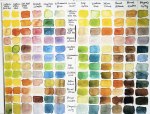



















[
](https://carlosgrphoto.com/2018/11/03/fujicolor-c200-review/film-taiwan-camping-ktv-mar2017-nik n-f100-fujicolor-c200011/)





\r
#filmreviews #35mm #35mmfilm #35mmfilmreview #35mmreview #agfa #analogphotography #c200review #colorplus #film #filmreview #fujicolor #fujicolorc200 #fujicolorc200review #fujifilm #fujifilmreview #iso200 #iso200film #iso400 #kodakcolorplus200 #nikon #photography #review #superia\r
posted by pod_feeder_v2\r
\r
\r
\r
—-\r
\r
\r
\r
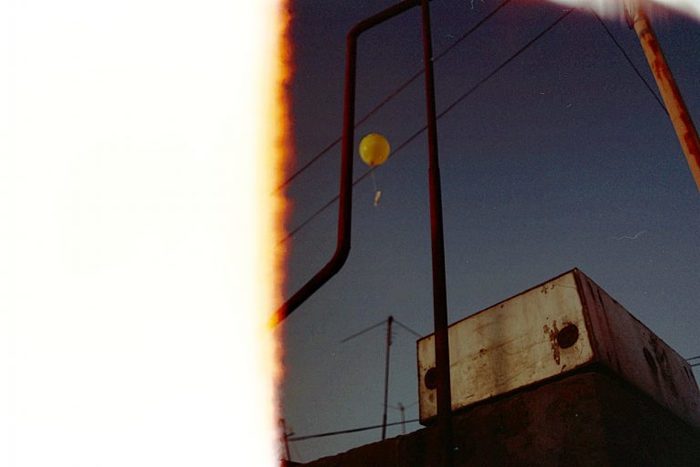
shot with mamiya zm, 28mm f2.8 mamiya sekor e lenses on fujifilm eterna 250d film. #firstoftheroll #robot #balloon #film #35mm #film-photography #film_photography #kanaker #qanaqer #yerevan #rust
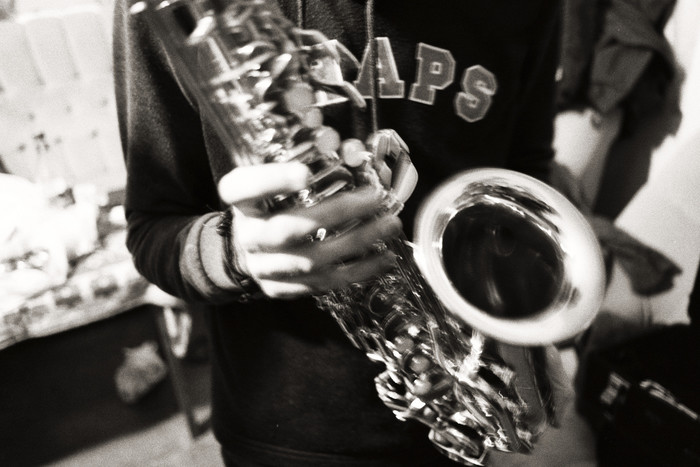
i love the grain of black and white film. hp5 400 EI 1600.
#vanadzor #saxophone #bw #film #outofthescanner #35mm
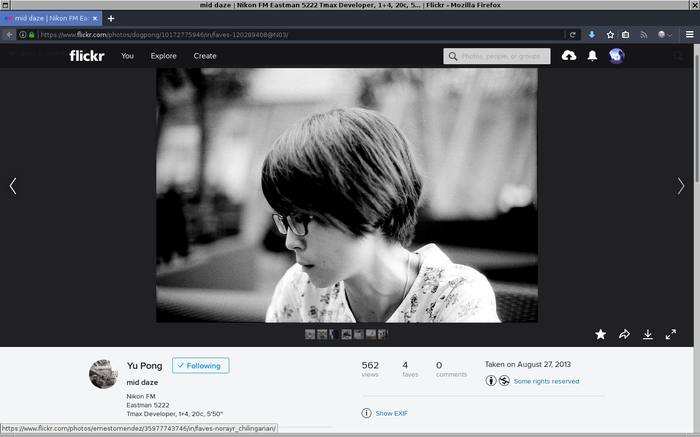
the second photo I would like to share with you today is taken with Nikon FM/35mm F2.0 lens on Eastman Double X 5222 film.
#eastman #35mm #doublex #eastman_double_x #5222 #film #film-photography #film_photography #girl
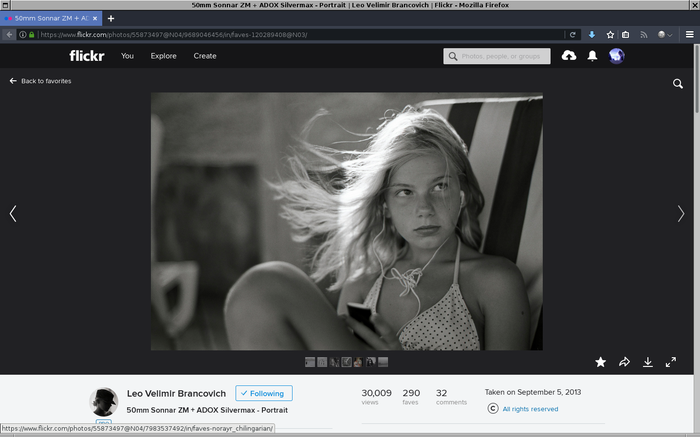
i’d like to share a couple of photos with you, those are not taken by me. this shot was taken with 50mm Carl Zeiss Sonnar ZM F1.5 lens on Adox Silvermax film. I guess Helios 85mm F1.5 is one of its descendants, well its design is taken from Biotar 1.5 but I guess it is related with Sonnar F1.5 too.
#photography #adox #silvermax #film #35mm #sonnar #sonnar_zm #film-photography #film_photography #zeiss #girl #photo
Do yourself something good and stop scanning like crazy. Listen to your eye doctor and get your nose of the computer screens.
Print and enjoy the real advantage of the analog imaging system by holding a superior product in your hands: a fibre base silver print from an analog negative. Paper consumption is what keeps the factories running. Not film.
http://www.japancamerahunter.com/2014/06/film-news-adox-interview/
#film #film-photography #film_photography #photography #adox #35mm #interview
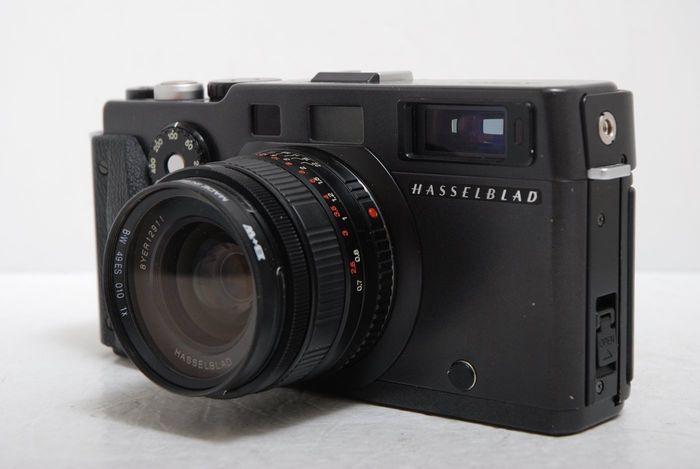
#hasselblad #35mm #camera #licking_oneself
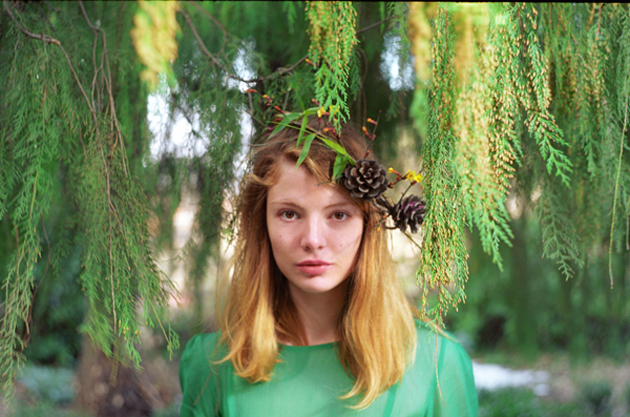
http://www.flickr.com/photos/mariamsitchinava/8439692794/sizes/o/in/photostream/
by Mariam Sitchinava #photography #georgian #film-photography #girl #35mm #photo #film #լուսանկարներ #ֆոտո #աղջիկ #աղջիկներ #վրաստան #ժապավեն #tbilisi #թբիլիսի
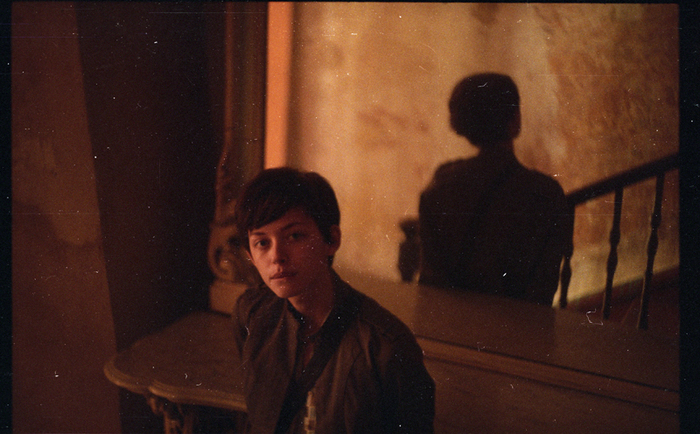
http://www.flickr.com/photos/mariamsitchinava/8441597035/sizes/o/in/photostream/ by Mariam Sitchinava
#photography #georgian #film-photography #girl #35mm #photo #film #լուսանկարներ #ֆոտո #աղջիկ #աղջիկներ #վրաստան #ժապավեն
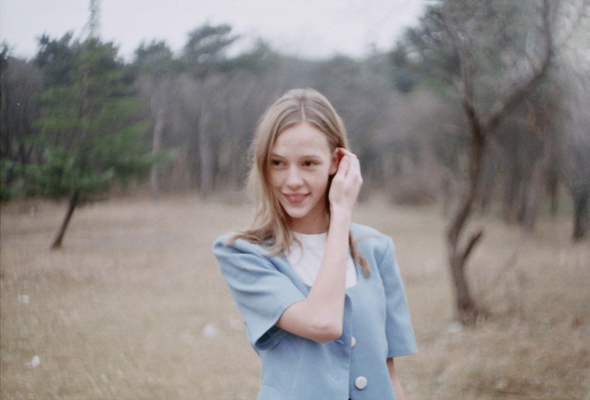
http://www.flickr.com/photos/mariamsitchinava/8442730490/sizes/o/in/photostream/
by Mariam Sitchinava
#photography #georgian #film-photography #girl #35mm #photo #film #լուսանկարներ #ֆոտո #աղջիկ #աղջիկներ #վրաստան #ժապավեն